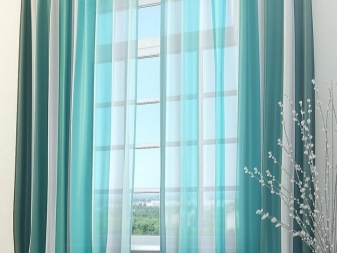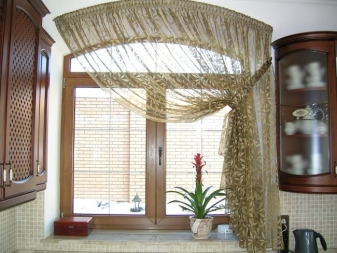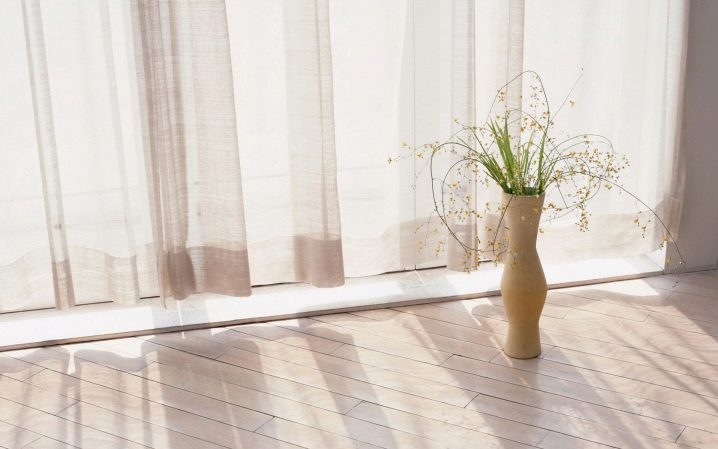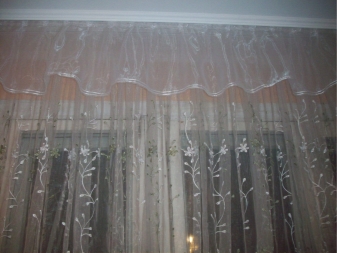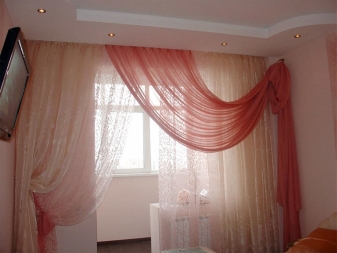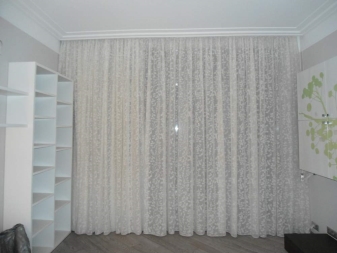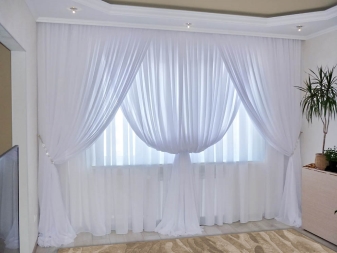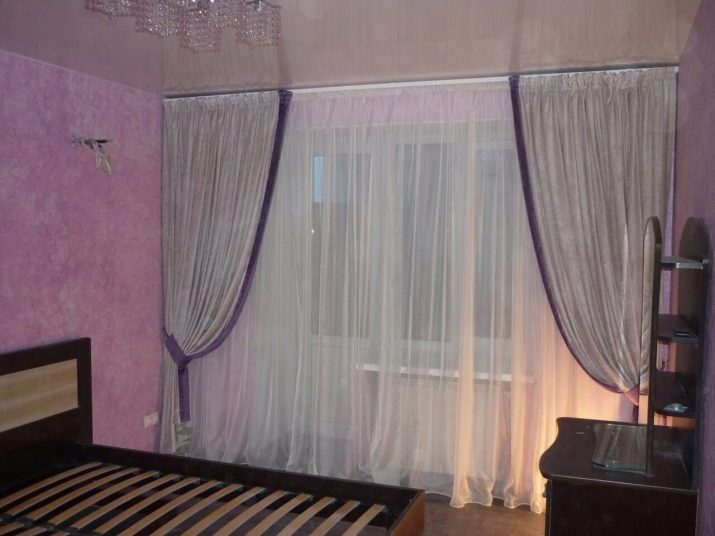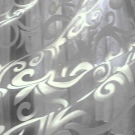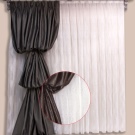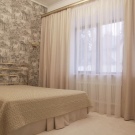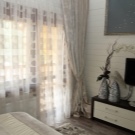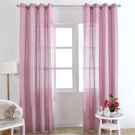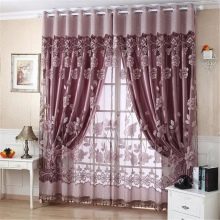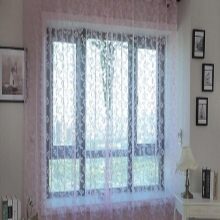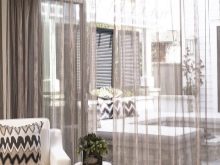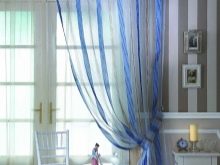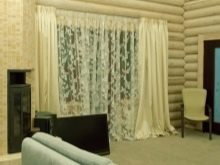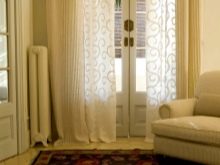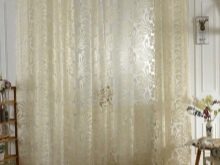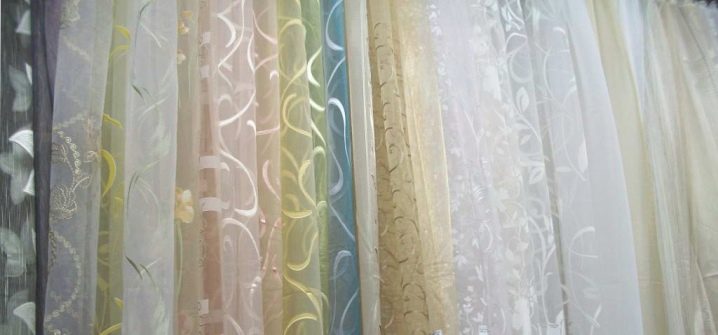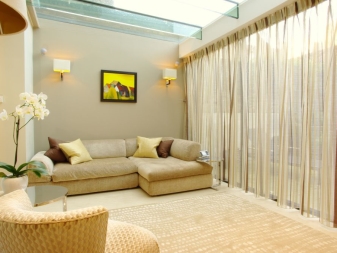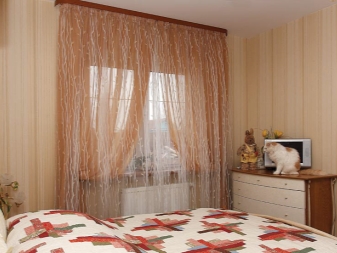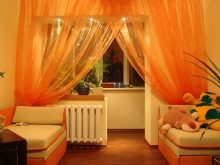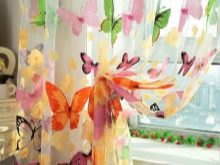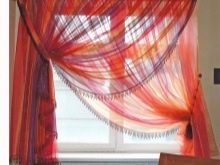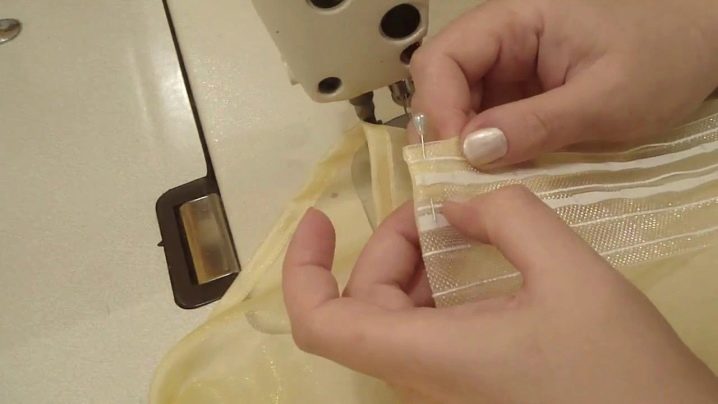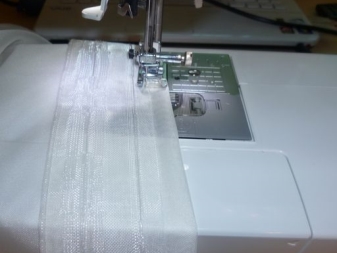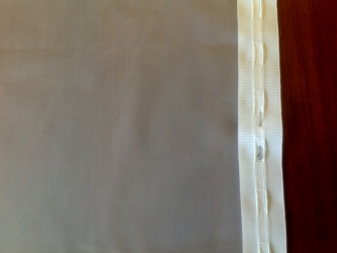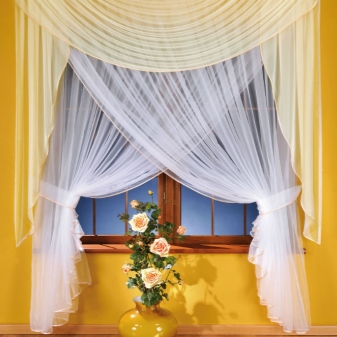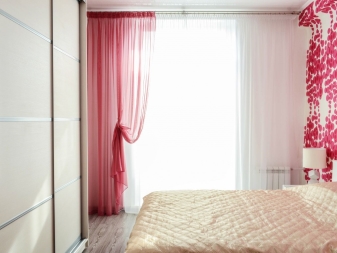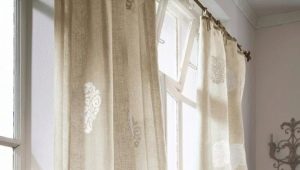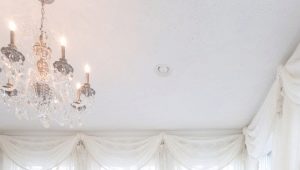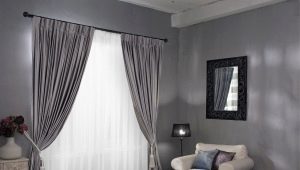Organza tulle
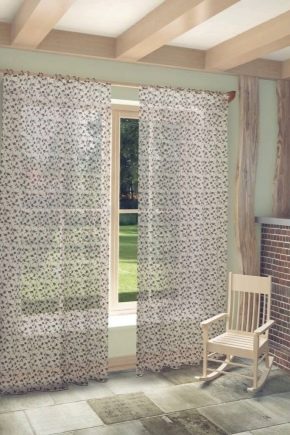
Speaking of "tulle", we mean the fabric from which light curtains are sewn on the windows, the main function of which is to close a person from those who are outside and at the same time provide a good overview of who is inside the room. Tulle was invented in France for the bride of the king, who wanted to hide her face from guests. Initially, it was made by hand and only from natural silk and cotton threads.
Nowadays, tulle is produced on an industrial scale and can use polyester for the base. Modern fashion allows for the presence of windows on the windows of tulle from a dense, rigid fabric, for example, organza. There are many variations on how to organically fit organza into a room's design.
What is the difference?
Now the concept of "tulle" includes all transparent curtains, which are also called "day curtains", including from organza and veils.Therefore, its differences from tulle can be called mythical - this is its variety. By the way, the word "tulle" is masculine.
Usually organza is made from natural fabrics - silk and cotton, but now you can often find synthetic additives - polyester. The two fibers of the fabric are twisted together, forming a dense, well-shaped fabric. Organza tulle is matte and glossy, as well as with a pattern applied by printing, etching and even embroidery.
Benefits
Organza on a number of signs better than other fabrics is suitable in order to create a modern window design:
- this fabric is denser and stiffer than standard tulletherefore, its service life is not limited to a couple of years, but easily reaches 8 and even 10 years without loss of appearance;
- organza easily combines with almost all tissueswhich are used for sewing heavy night curtains;
- aboutrganza is transparent, airy and, despite its high density, transmits a lot of light;
- one of the differences from cheap fabric for windows is the high light resistance of organza. Tulle does not fade from it even on the south side;
- organza is easy to care for, it is erased not only manually, but also in a typewriter; any dirt is washed off it.
However, with all the advantages, this fabric has its drawbacks:
- high cost of fabric. In the manufacture uses a complex technological process, which affects the price increase;
- air passes badly through this fabric therefore, it is better to make such curtains of two cuts in order to open them regularly for ventilation;
- organza with the addition of polyester instead of silk does not form small folds on the windows, therefore, it is not recommended to use this material for small windows in small rooms from a design point of view;
- hooks easily remain on the fabric, therefore, if there is a network of pets or small children in the house, it is not recommended to hang such tulle on the windows.
Trendy colors
This season is particularly relevant monochromatic tulle natural natural colors: green, ocher, golden, yellow, blue. Squeak of fashion - it is beautiful to combine two colors. If you do not know how to combine the color exactly for your interior, choose white as the second tone. These curtains will look advantageous in high-tech, Scandinavian and ethnic style.
However, be careful not to hang white tulle on the windows with white walls. There is a risk to “fly by” with a touch, and then one thing will look like a dirty tone.
Versions with embroidery, print
It looks absolutely amazing on the windows of organza with floral embroidery. These curtains will fit perfectly in a romantic style or Provence. As a rule, monochromatic white is chosen as the background, on which a delicate pattern in the form of flowers is applied. In this case, the pattern is large, medium and small. The larger the pattern, the larger the window should be.
Organza with printed pattern and golden ornament has its own characteristics. Despite the durability of acrylic paint, it requires frictionless hand washing. Ironing such curtains is not recommended, wet tulle is hung on the window and smoothed by its weight.
How to choose?
It is possible to choose fabric for curtains, proceeding from the most different aspects. One of them is the purpose of the room.
- For the bedroom selected curtains dim colors with good air throughput. If you prefer the twilight, you can stay on tulle burgundy, blue, pale green hue.
- For the kitchen organza - an ideal fabric, as it does not accumulate dust on its fibers, is easily washed, serves for a long time and does not fade in the sun.
- For a child's room You can also choose an organza (but with regular opening of the curtains during the morning airing), its advantage is the same as for the kitchen - it is easy to wash. For older children, you can choose cotton curtains.
A semi-organza or micro-veil is a light, soft, transparent fabric that looks like silk and drapes easily. This is ideal for windows that require the creation of soft, small folds.
How to hem?
For sewing curtains and tulle scissors, thread, sewing machine and iron are necessary. If you have ceilings of the same height over the entire area of the room, then you can even out the bottom edge of the tulle curtains by stretching one horizontal thread, and then cut the fabric with scissors along this guide.
Since tulle is a sliding material that is constantly tilted, it is recommended to mark the length you need to trim every 20 cm from the edge and put a thread of a contrasting color along the marks. On it and cut off the edge.
- In the machine you need to fill the threads no thicker than 40 size. If the organza tulle is shiny, then it is better to choose threads two tones lighter. In sunlight, they will not be visible on the fabric, because the lighter tone is not so much distinguished than the darker.
The needle in the machine must be sharp and thin so as not to cling to the fabric.
- Before you put the machine on the table, you need to cover it with a sheet. The cotton curtain will not slip and warp, it will be much easier to sew.
- Before stitching, adjust the stitch of the sewing machine on an unnecessary piece of fabric. If the fabric is very thin and clings to the typewriter, hem it on tissue paper or tracing paper. After finishing work, it is torn off.
- Work starts from the side edges, bending them 1-2 cm and smoothing, stitch at a distance of 1-2 mm from the inner edge of the hem.
- If the curtains have lace, festoons at the bottom, the length is adjusted along the top.
- Organza is stitched at least 3 cm in the hem, that is, when cutting the length, it is necessary to leave a 6 cm stock. The veil is stitched 2 cm, i.e. 4 cm allowance from the desired length.
You will learn more about organza tulle stitching from the video below.
How to care?
It is possible to wash organza tulle in a washing machine in a bag for delicate fabrics by turning off the spin mode. Washing should be done several times a year, avoiding the monthly “bathing” of the fabric. If it was urgently necessary to get rid of the unpleasant smell, it is recommended to remove the tulle and hang it in the wind for a day. From frequent washing the fabric deteriorates and turns gray.
Low-foaming compositions are used as a detergent (it is very difficult to rinse powder particles from tulle), and for hand washing it is best to use table salt - a tablespoon to 1 liter of water. In 2-3 hours it will dissolve all the dirt on the curtains.
It is necessary to rinse curtains twice, slightly squeezing them with hands. The first rinse in warm water, the second - in the cold. In the second rinse, table vinegar can be added to give organza a shine. After a good rinse, the water remains clear.
Tulle is dried in an upright position, smoothing under its weight.
Options in the interior
- This season, special emphasis should be placed on the drapery of the window curtain: if the canvas is whole and without grabs, then there will always be a lot of folds. For draping 6-7-meter organza tulle, it is not recommended to assemble the top tape to the size of the window opening. In this case, only the upper part will be draped, and the lower part will be a “stake”. It is better to distribute such tulle on a large number of hooks and drape manually.
- A great way to decorate a window is with tulle holders. This season, you can pick up not only night curtains, but also tulle itself in several places. To do this, several stripes of cloth are hung on the window, different colors can be made, and each of them is intercepted by the holder in the form of a butterfly or a tree.
